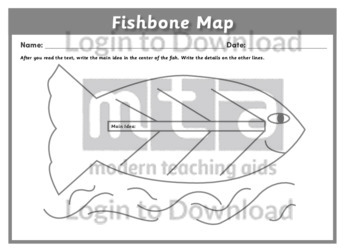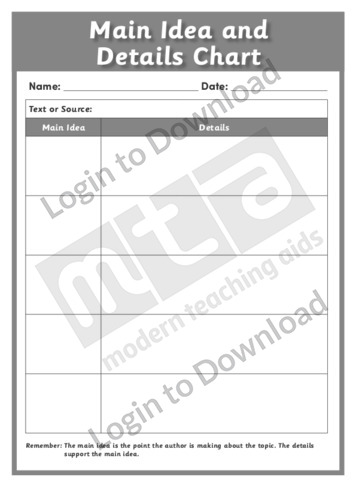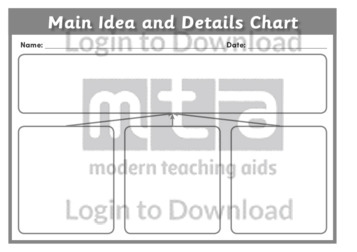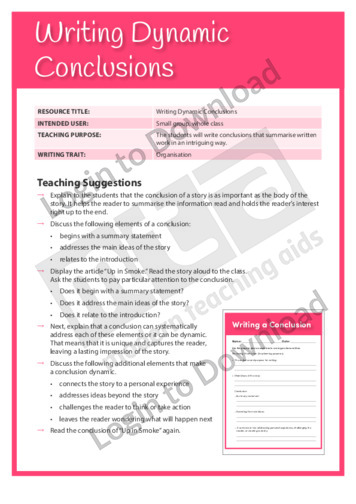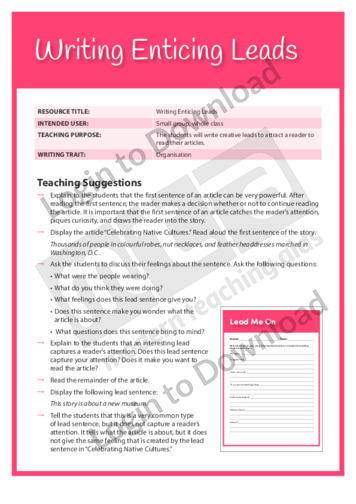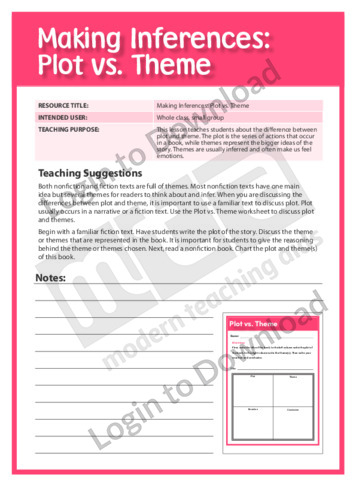This graphic organiser, ‘Fishbone Map’ combines brainstorming and mind mapping skills inside the skeleton of a fish to build an understanding of the relationship between the main idea and the supporting details. It creatively helps students to visualise all possible facets of a topic instead of simply focusing on the broad umbrella term. It can …More
This graphic organiser, ‘Main Idea and Details Chart’ assists students to identify the relationship between the main idea and supporting details. For example, students can use this table to break down a broad concept into greater detail during a post-reading comprehension activity. It could also be used as a pre-writing prompt to expand on ideas.
This graphic organiser, ‘Main Idea and Details Chart’ assists students to identify the relationship between the main idea and supporting details. For example, students can use this graphical scaffold to break down a broad concept into greater detail during a post-reading comprehension activity. It could also be used as a pre-writing prompt to expand on …More
This graphic organiser, ‘Main Idea Hierarchy’ is an upside-down tree diagram used to organise the flow of ideas into a top down format. For example, students can use this graphical scaffold to break down a broad concept into greater detail. The chart is a great resource for post-reading comprehension activities or as a pre-writing prompt …More
This Writing Traits activity ‘Writing Dynamic Conclusions’ encourages students to write conclusions that summarise written work in an intriguing way.
This Writing Traits activity ‘Writing Enticing Leads’ encourages students to write creative leads to attract a reader to read their articles.
This content area reading learning activity, Plot vs. Theme,’ helps students understand the difference between plot and theme. It teaches students that the plot is the series of actions that occur in a book, while themes represent the bigger ideas of the story.
It�s that easy!

